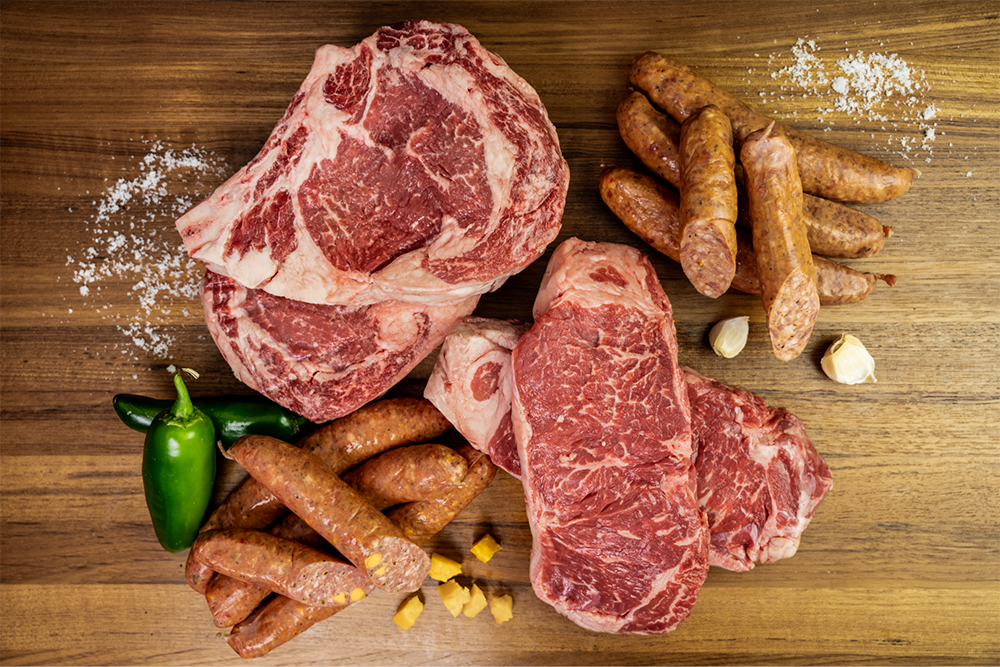Bagley Farms Meat Market Edwardsville IL: Your Go-To Destination for Local Meat Selection
Bagley Farms Meat Market Edwardsville IL: Your Go-To Destination for Local Meat Selection
Blog Article
Uncover the Art of the Butcher's Cut in a Modern Meat Market
In the ever-evolving landscape of modern meat markets, the butcher's cut has transcended its standard roots, merging age-old craftsmanship with contemporary techniques. What really sets the modern-day butcher apart is their ability to build a deeper link between consumers and the origins of their meat.
Development of Butchery Methods
The evolution of butchery techniques mirrors an abundant tapestry of development and adaptation driven by advancements in innovation, adjustments in consumer demand, and a much deeper understanding of meat scientific research. Historically, butchery was a craft gave with generations, with methods honed over centuries to make best use of return and taste. Nevertheless, the industrial revolution ushered in automation, changing traditional methods and allowing large-scale handling.
The mid-20th century saw butchery strategies even more refined by scientific understandings into muscle biology and meat aging, enhancing both inflammation and taste. Advancements like vacuum product packaging and refrigeration prolonged item shelf-life, enabling butchers to diversify offerings and boost quality assurance. This period additionally noted the surge of specific tools, such as band saws and meat slicers, which raised accuracy and effectiveness in meat processing.

Digital systems currently aid in tracking pet provenance and optimizing cuts to satisfy details consumer choices. Additionally, a renewal in artisanal butchery has actually arised, blending conventional skills with modern expertise to provide to customers looking for moral and lasting meat choices.
Recognizing Meat Cuts
Understanding the complexities of meat cuts is important for both butchers and customers looking for high quality and value. For butchers, accurate cuts mirror skill and regard for the craft, making certain very little waste and optimum yield.

Comprehending muscle mass make-up is essential; muscle mass made use of more frequently by the animal often tend to be harder and are best suited for slow food preparation methods, while less-used muscles, like those located in the loin, are a lot more tender and perfect for barbecuing or roasting. Familiarity with these distinctions empowers customers to make enlightened options, boosting their culinary ventures.
Choosing High Quality Meat
Picking the best meat includes more than simply picking a visually enticing item from the screen. bagley farms meat market edwardsville il. The art of selecting top quality meat needs a critical eye and expertise of particular qualities that represent quality and quality. First of all, focus on the shade; beef should have a bright, cherry-red shade, while lamb needs to exhibit a soft pink tone, and pork a pale pink. This indicates the meat is fresh and hasn't been subjected to oxygen for as well lengthy.
Secondly, consider the marbling, which describes the white flecks of fat within the muscle. Proper marbling is an essential indication of inflammation and flavor, as it melts during cooking, enhancing the meat's juiciness. Bear in mind, higher marbling commonly correlates with superior top quality cuts, such as USDA Prime.
Appearance is an additional crucial factor; meat ought to really feel strong to the touch, not slimed or excessively soft. Furthermore, bear in mind the fragrance. Fresh meat needs to have a clean, neutral scent, cost-free from any type of sour or repulsive odors.
Coupling Cuts With Food Preparation Approaches

On the other hand, harder cuts like brisket and chuck roast are abundant in collagen, which breaks down right into jelly when cooked gradually. These cuts are ideal for braising or slow roasting, enabling the meat to tenderize in time and establish deep, intricate flavors. Similarly, cuts such as short ribs and pork shoulder prosper with slow-cooking methods, where prolonged cooking times transform their robust structures into delicious dishes.
Lamb shanks and oxtail, which need extended food preparation to soften, are perfect prospects for cooking or slow-moving simmering. These methods coax out rich, hearty flavors while maintaining dampness. By understanding the unique qualities of each cut, cooks and home cooks alike can elevate their culinary productions, making sure each meal is both pleasing and memorable.
The Butcher's Duty Today
Navigating the progressing landscape of the helpful site modern meat market, the butcher's role today extends beyond plain prep work of cuts. Contemporary butchers are cooking craftsmens, teachers, and supporters for lasting techniques. They bridge the gap between the ranch and the fork by ensuring honest sourcing, comprehending pet husbandry, and prioritizing openness in the supply chain. This shift shows the expanding consumer demand for high quality over amount, where provenance and animal well-being are vital.
Along with crafting exact cuts, butchers currently involve straight with consumers, providing cooking advice and tailoring choices to fit individual needs and choices. Their experience in meat aging, marbling, and flavor accounts equips customers to make educated choices, enhancing their culinary experiences. This personalized solution exhibits the butcher's progressing duty as a relied on advisor in the kitchen.
Furthermore, butchers are critical click to read in minimizing waste, making use of whole animals to develop varied products such as sausages and stocks. This extensive approach not only respects the animal but additionally lines up with contemporary sustainability goals. This way, the contemporary butcher personifies both tradition and technology, adjusting to an ever-changing market while preserving the creativity and honesty of their craft.
Verdict
Mastery in understanding varied meat cuts and high quality indicators equips butchers to offer enlightened referrals, aligning particular cuts with optimum food preparation approaches. By honoring historical techniques while embracing contemporary demands, the butcher's duty stays essential in today's advanced meat market.
Report this page